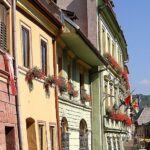Timisoara

Located in western Romania, Timisoara (Timișoara) is a city rich in cultural diversity. Influenced by Roman, Tatar, and Turkish cultures, Timisoara offers a unique blend of traditions and architectural styles. The city’s vibrant atmosphere, lively nightlife, and thriving arts scene make it a must-visit destination.
Timișoara is one of the most important educational centres in Romania, with about 40,000 students enrolled in the city’s six universities. Like many other large cities in Romania, Timișoara is a medical tourism service provider, especially for dental care and cosmetic surgery. Several breakthroughs in Romanian medicine have been achieved in Timișoara, including the first in vitro fertilization, the first laser heart surgery and the first stem cell transplant.










